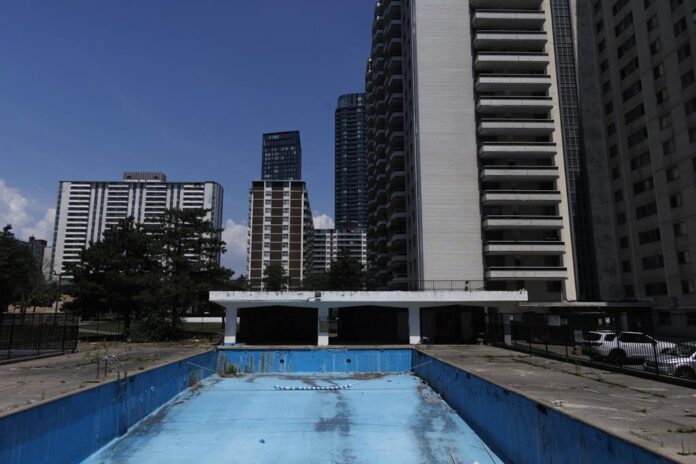"In Toronto’s densely populated St. James Town neighborhood, Anushen Selvasegar finds himself struggling to stay cool in his 14th-floor apartment during scorching heat waves. With windows that only open a fraction of the way and limited access to cool air, Selvasegar and his family are among many residents facing the challenges of extreme heat without proper cooling options.
Demand for Maximum Temperature Bylaw
A coalition of tenant and environmental advocacy organizations, supported by seniors’ and disability rights groups, are advocating for the implementation of a maximum temperature bylaw in Toronto. This bylaw would regulate indoor temperatures to not exceed 26 degrees Celsius to ensure the well-being of residents during heatwaves.
Urgency of Climate Crisis
The urgency of addressing extreme heat events is underscored by the impacts of climate change, which have already increased the frequency of high-temperature days in Toronto. As temperatures continue to rise, the need for proactive measures to protect vulnerable populations becomes increasingly critical.
Balancing Perspectives
While advocates push for a maximum temperature bylaw to safeguard residents, concerns have been raised by landlord groups about the potential financial burden of providing and maintaining cooling systems. The issue of rent increases to offset costs is also a point of contention, highlighting the need for comprehensive policies to protect tenants from undue financial strain.
Moving Forward
In navigating the complexities of implementing a maximum temperature bylaw, collaborative efforts between government, advocacy groups, and landlords are essential. Strong funding support for retrofitting buildings, enhanced rent control measures, and expanded utility assistance programs for low-income tenants could help address the challenges associated with regulating indoor temperatures.
Conclusion
As Toronto grapples with the impacts of extreme heat events exacerbated by climate change, the call for a maximum temperature bylaw reflects a commitment to public health and safety. By striking a balance between protecting residents and addressing concerns of property owners, stakeholders can work towards a solution that ensures the well-being of all individuals, especially during periods of heightened heat stress."













